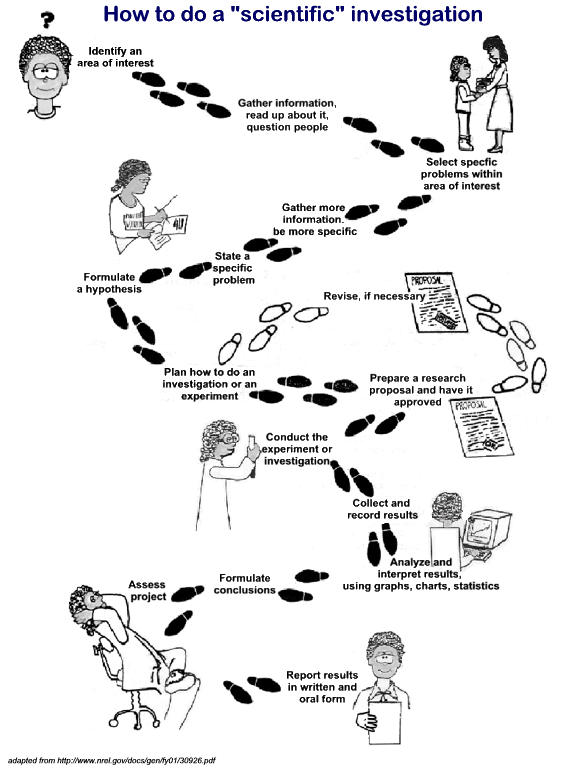| More about the Scientific Method |
|
There are many variations of scientific method. In academic institutions (e.g. universities) and research organizations scientists and mathematicians would spend many years investigating one phenomenon. In the classroom we simplify that process considerably. Learners participating in Science Olympiads will carry out a fairly extended research over several months, but for the purpose of this module we will use it more flexibly for small projects and units that involve
A hypothesis is a bit more than a guess, but it is an educated guess or assumption that someone makes. For example, through observing traffic patterns every day on your way to work you may make the assumption that rainy weather causes an increase in traffic. You are suggesting that rainy weather causes people to use cars instead of public transport. You do not have evidence to support this supposition. You therefore state the hypothesis that "rainy weather results in heavier traffic because people do not want to get wet while waiting for public transport". You then conduct traffic counts in various weather conditions and gather data. Once you have sufficient data to show some results you can draw conclusions. If there are clearly more cars passing one point at a certain time every rainy day than there are every sunny day, you can confirm your hypothesis. If you count no difference, you deny the hypothesis i.e. it is not confirmed, and your assumption may be incorrect. Proper scientific enquiry would require a more rigorous process than the one just described, but this is a simple illustration. An investigation using the scientific method is not restricted to science classes. Anyone can use it, it is a model of investigation. Typically the process would involve some or all of the following steps: See if you can spot a scientific method in these simple, but good, example projects: Worm
Bin You will definitely see a complete
example in Energy
Audit.
Use this template to create a unit based on the scientific method |
